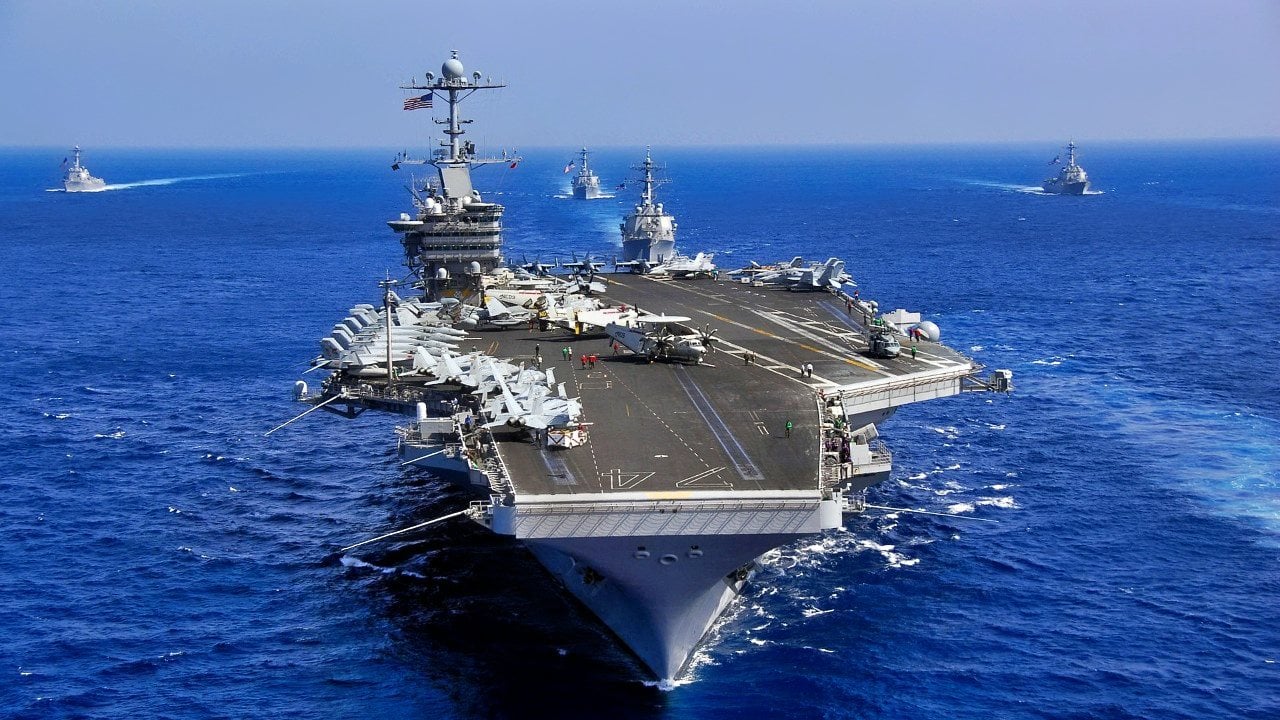U.S. Navy Aircraft Carrier USS Nimitz Is Nearing the 'End of the Line'

Summary and Key Points: The USS Nimitz (CVN-68), the U.S. Navy's oldest in-service aircraft carrier, is preparing for one of its final deployments before decommissioning in 2026. After more than 50 years of service, the nuclear-powered supercarrier will be deactivated at Huntington Ingalls Industries' Newport News Shipbuilding facility.

-The decommissioning process is intricate, involving the defueling and removal of the ship's nuclear reactors, which will be sent to specialized Department of Energy facilities for disposal.
Important Point: Despite her retirement, parts from USS Nimitz will continue to serve in the fleet, extending her legacy through sister carriers and the new Gerald R. Ford-class vessels.
The End is Coming Soon for Navy Aircraft Carrier USS Nimitz
Ship watchers on social media confirmed that the United States Navy's oldest in-service aircraft carrier, the nuclear-powered USS Nimitz (CVN-68) returned to her homeport of Bremerton, Washington, on Saturday. The warship, the lead vessel of a class of ten supercarriers, had only returned to service on June 22 after spending seven months in port as part of a "planned incremental availability" (PLA).
CVN-68 took to sea for a brief shakedown before she heads out for what is likely to be one of her final deployments.
It was last week that U.S. shipbuilder Huntington Ingalls Industries (HII) received an $11.7 million contract modification to support the deactivation of USS Nimitz, Naval-Technology first reported. The current schedule calls for CVN-68 to be decommissioned in 2026, after more than five decades since the nuclear-powered carrier first entered service.
"The contract focuses on additional support for pre-advanced planning related to the defuelling and inactivation of the USS Nimitz (CVN 68), the first Nimitz-class aircraft carrier," Naval-Technology noted, with the initial phase of the operation taking place at HII's Newport News Shipbuilding facility in Newport News, Virginia. The ship will be deactivated at the same shipyard that built the supercarrier.
USS Nimitz's Legacy: What Happens After the Iconic Carrier's Retirement?
While USS Nimitz will head to sea again, at least one more time, HII will begin the planning and preparation work almost immediately, as the contract calls for that first phase of the recycling process to be completed this November. Following the deactivation, the warship's reactor compartment will be disposed of, and after that, the ship will be broken up.
Sadly, because of the nuclear reactor on board, there is no way USS Nimitz could be preserved as a museum. There have also been concerns that maintaining the warship in such a capacity could reveal too many details about the ship's layout and put the remaining nine Nimitz-class supercarriers and even the new USS Gerald R. Ford (CVN-78) at risk.
Lengthy Process
Disposing of a modern nuclear-powered aircraft carrier is almost as involved as building it, as the disposal involves the defueling of her two nuclear reactors, where the fuel is moved to a shielded transfer container, which will be shipped via a specially-designed container to the Naval Reactors Facility in Idaho.
The reactors will be thoroughly cleaned, sealed, and removed and then sent to a Department of Energy (DoE) facility in eastern Washington.

Following those steps, any remaining parts from USS Nimitz that could be used on other carriers would be removed and prepared for usage for her sister carriers and those of the Gerald R. Ford-class flattops now under construction. Parts of the USS Enterprise (CVN-65), the U.S. Navy's first nuclear-powered carrier – which is already in the recycling process – have already found their way onto some Nimitz-class aircraft carriers. Thus the retired carriers will aid the fleet for years to come.
Author Experience and Expertise: Peter Suciu
Peter Suciu is a Michigan-based writer. He has contributed to more than four dozen magazines, newspapers, and websites with over 3,200 published pieces over a twenty-year career in journalism. He regularly writes about military hardware, firearms history, cybersecurity, politics, and international affairs. Peter is also a Contributing Writer for Forbes and Clearance Jobs. You can follow him on Twitter: @PeterSuciu. You can email the author: Editor@nationalinterest.org.
Image Credit: Creative Commons and/or Shutterstock.
